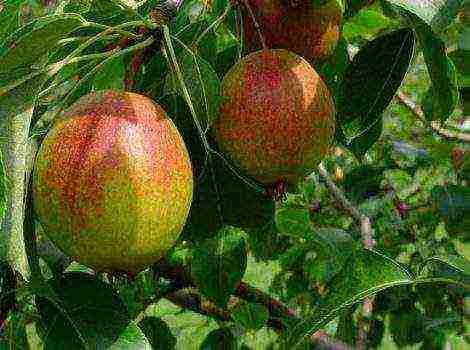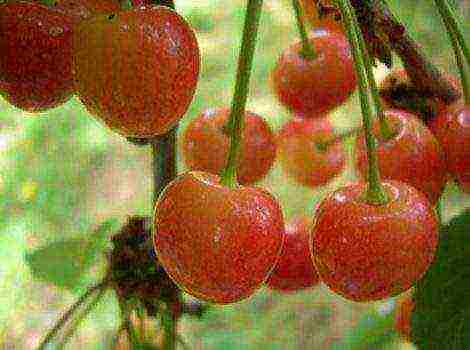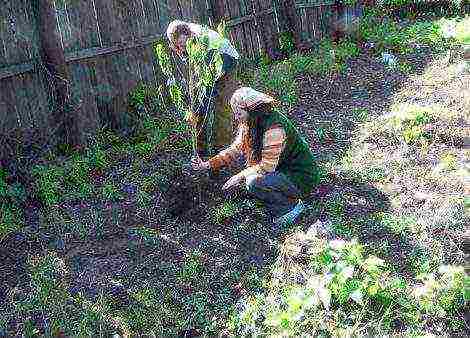Content
The significance of the chokeberry - the medicinal property of the fruit, which occupy a leading position in the content of antioxidants.
The crop has a special genetics that contribute to high and stable yields even with minimal maintenance.
Chokeberry - the result of crossing black chokeberry and mountain ash.
The habitat of the natural species of chokeberry is swamps, sandy plains and mountain slopes of North America. This is an unsightly and undersized shrub, which is radically different from the well-known chokeberry.
The shrub owes its cultivation and popularity in Russia to the Russian breeder I.V. Michurin. As a result of numerous experiences and practical tests a completely new culture was obtained - chokeberry.
Due to its high winter hardiness, disease resistance, unpretentiousness to climatic and soil conditions, the shrub quickly spread over vast territories.
Lowlands are good, where the occurrence of groundwater is not more than 2 m. This is isolated by the relatively shallow occurrence of plant roots, the bulk of which is located up to 60 cm, and the taproots rarely reach a depth of 2 meters.
With a lack of moisture in the root layer, winter hardiness and productivity of the shrub decreases.
Chokeberry grows well on different soil types: chernozems, gray forest, drained peat bogs, sod-podzolic. Stony, swampy and saline soils are absolutely unsuitable for its cultivation.
Chokeberry can be planted in a combined hedge or as a specimen plant to decorate a spacious area.
This is a good option to strengthen the ravines or the perimeter of the personal plotlocated along a cliff or river mouth.
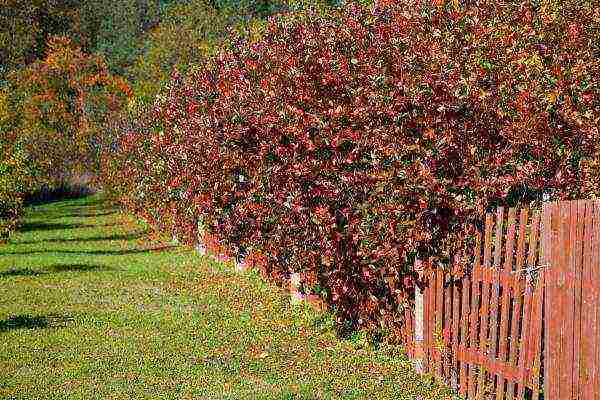
Choosing a seedling and varieties of chokeberry
Breeders have introduced many varieties and hybrids of chokeberry. Popular varieties:
- Hakkia;
- Black-eyed;
- Rubin;
- Kutno;
- Viking.
Their signs are almost similar, there are minor differences in taste and fruiting timing.
therefore the main criterion when choosing a seedling should be purchase of planting material adapted to the conditions of the region.
For planting, you need to purchase a one- or two-year-old seedling, while it is important to pay attention to quality indicators.
These are: height up to 1.3 m, healthy bark without traces of damage, developed taproots of at least 25 cm with a mass of overgrown roots.
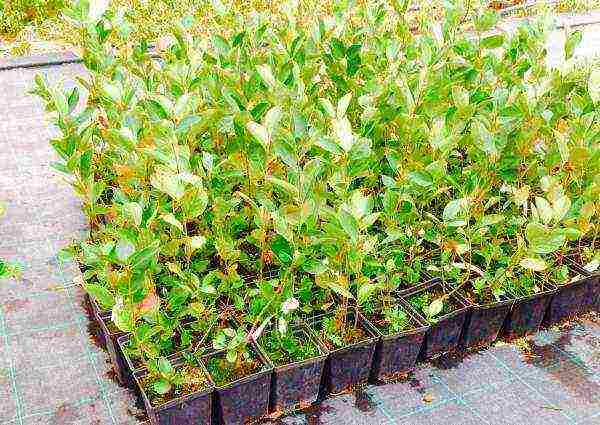
The productive period of chokeberry in the middle zone is 25-30 years... All this time, it has a stable and high yield.
Therefore, to provide one family with fruits, it is enough to plant 1-2 shrubs, which will enter fruiting in 2-3 years.
When to plant: fall or spring?
Chokeberry can be planted in spring or autumn... The most preferable for the development of a seedling and a gardener is an autumn planting. At this time, you can buy planting material with fresh roots at a bargain price.
In the middle lane, chokeberry planted from mid-September to the third decade of October... During this period, the shrub gradually enters a state of relative dormancy, but its roots will develop until the soil temperature drops to -4 ° C.
Therefore, in the spring, the plant will immediately begin to build up its vegetative mass. This gives a great advantage to the seedlings of autumn planting, which are ahead in development of plants planted in spring by more than 20 days.
Benefits of autumn planting for the gardener - saving time, the plant will not need additional care, except for a shelter for the winter.
When planting in spring it will be necessary to control the likelihood of return frosts, exposure to dry winds and temperature drops.
Regardless of the general recommendations, when planting a seedling, you need to focus on the average temperature indicators of the region. You can plant at least 20 days before the first frost.... If the deadlines are missed, the seedling needs to be dug in the ridge until spring.
In the spring, the plant is planted before bud breakwhen the air temperature warms up to + 15 ° С.
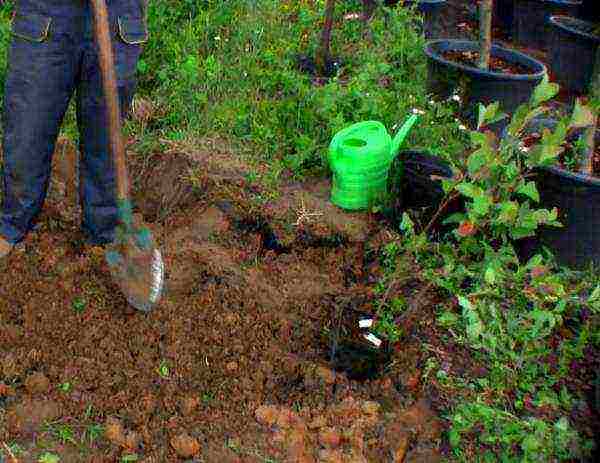
How to plant: stages of work
The planting pit and the seedling substrate are prepared in advance, preferably in 1-2 months. During this time, the soil mixture is structured, and the nutrients will take forms that are easily digestible by the roots of the plant. The optimal pit size is 60x60x50 (cm), the landing pattern is 2.5x4 (m).
To prepare the substrate, you will need the top layer of soil removed during the digging of the hole. It is supplemented with components:
- humus or compost 2 buckets;
- superphosphate 120 g;
- potassium sulfate 60 g.
A drainage layer of broken brick or crushed stone is laid at the bottom of the pit, no more than 15-20% of the total volume.
Before planting, the seedling needs to be inspected again.... If damaged roots are found, problem areas are cut off to healthy skin, and dried ones are placed in water for 10 hours.
For better survival, the roots are dipped in a mash made from oily clay, mullein and water.
In light soils, the seedling is buried by 6 cm, in heavy soils by 2-3 cm... Thus, the root collar of the bush after shrinkage of the soil should remain 1-3 cm below the ground level.
I am guided by the recommended criteria; at the bottom of the pit, a mound is formed from the prepared substrate. The roots of the seedling are evenly distributed on its surface. It is important to ensure that there are no unnatural folds.
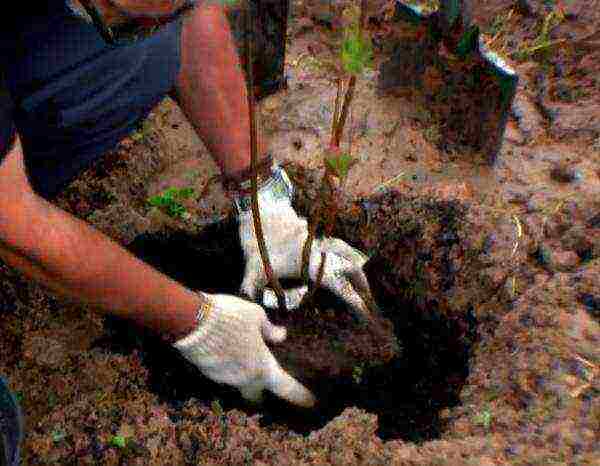
The roots are covered with soil mixture, periodically shaking the stem to avoid the formation of voids. After compacting the trunk circle and watering the seedling, need to form a layer of mulch... Well suited for this: peat, sawdust, grass cuttings or wood chips.
After planting, the aerial part of the seedling is cut, leaving only 20 cm in length... For autumn planting, the procedure is postponed until spring and carried out until bud break.
Care after landing
The care requirements for the shrub are minimal. Besides it is rarely affected by pests and diseases... This makes it especially attractive for cultivation in the country, where the presence of the gardener is not constant.
Shelter for the winter
A seedling planted in the fall must be prepared for the first winter season. For this he is bent to the ground and pressed with boards... It is important to do this until the air temperature drops to -1 ° С-2 ° С.
Otherwise, the stem of the bush will lose its elasticity and may break. While bending the bush it is important to ensure that the height of the arc does not exceed 20-30 cm.
Additionally the seedling is covered with spruce branches, and the layer of mulch is made higher. In winters with little snow, the bush is covered with snow.
In the spring, with the establishment of a stable temperature, the plant needs to be straightened. If it is kept in a bent state for a long time, the apical shoots can support.

Do I need to cut the shoots?
For the right balance of stability and yield an adult shrub should have 30-50 strong trunks.
Sanitary pruning is in the removal of old, rotten and bare branches. The shrub lays fruit buds on annual shoots, so they should not be shortened.
To increase the productivity and longevity of the shrub, anti-aging pruning should be done every 3-4 years... During the procedure, the shoots of the chokeberry are shortened by half their height.
Top dressing
Chokeberry responds well to feeding, which must be carried out twice a year... To do this, in the near-trunk circle per 1 m2, you need to close up:
- ammonium nitrate 20 g (in spring);
- potassium salt 20 g, superphosphate 30 g (in autumn).
Good results are obtained foliar feeding of shrubs after floweringwhen the fruits begin to set. To do this, it is sprayed with an aqueous solution of urea (20g / 10l).
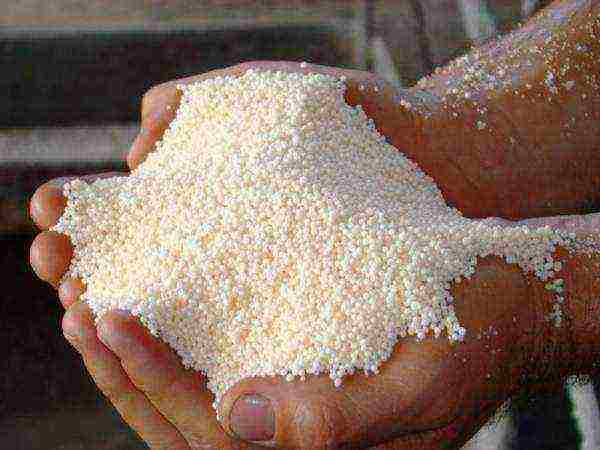
With the accumulation of an excessive amount of nitrogen, the growth and duration of the formation of basal shoots increases. In young shoots, the bark does not have time to lignify, and the apical bud does not form.
This leads to severe freezing even in the most favorable winter. therefore in the second half of the growing season, nitrogen fertilization should not be done.
Watering and loosening the soil
Chokeberry - a moisture-loving culture... Watering is especially important for her at the beginning of the growing season and during fruit formation.
In persistent hot weather, the shrub is watered every week. Water norm for an adult shrub 30 liters.
For this, irrigation furrows can be made at a distance of 30-40 cm from the shrub trunks. With this method, water will penetrate all the roots of the plant.
Excessive soil compaction contributes to severe soil freezing in the root layers, which significantly reduces the winter hardiness of the shrub.
Prevention of diseases and pests
After harvesting and in the spring before bud break, the shrub must be treated with fungicides. For this it is sprayed with 1% bordeaux liquid.
Shrub resistant to pest infestation... The reason for the spread of insects to black chokeberry can be a massive damage to the site by pests.
In these cases, it is necessary to apply a cardinal measure - spraying with chemicals.

Aronia fruits are good for culinary preparations. and are especially valuable for their medicinal properties. The shrub is also attractive for its decorative effect.
Hedge from a plant will transform the backdrop of the infield three times a year, from white during flowering to purple leaves in late fall.
Planting and caring for chokeberry:
